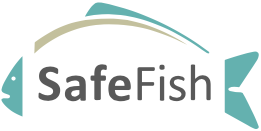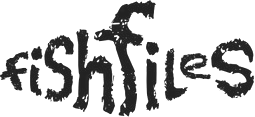Below is a list of issues currently under discussion at Codex and other international forums that are relevant to the Australian Seafood Industry. SafeFish welcomes any technical advice, comments, or input around these issues.
Issues under discussion at Codex
- Methylmercury – Maximum levels and associated sampling plans
- Canned Sardines – Proposal to include Sardinella lemuru in list of approved species
- Calanus oil – Inclusion in fish oil standard
- Diflubenzuron – MRL in Salmon
- Extrapolation of MRLs for Veterinary Drugs in Finfish
- Ciguatera – FAO/WHO Expert Meeting and potential establishment of a Code of Practice
- Pathogenic Vibrio species in seafood – Revision of Guidelines
- Viruses in Foods – Revision of Guidelines
- Listeria monocytogenes – Revision of Guidelines
- Safe Use and Reuse of Water in Food Production – New Guidelines under development
Issues under discussion at other International standard setting forums
- Risk benefit of fish consumption – Update (FAO/WHO)
- Microplastics – Assessing human exposure and implications for human health (FAO/WHO)
- Climate change: Current and anticipated food safety issues (FAO)
- Seaweed safety (FAO/WHO)
Methylmercury – Maximum levels and associated sampling plans
Codex Alimentarius Commission (CAC) have adopted maximum levels (MLs) for methylmercury in Tuna (1.2 mg/kg), Alfonsino (1.5 mg/kg), Marlin (1.7 mg/kg), Shark (1.6 mg/kg), Orange Roughy (0.8 mg/kg) and Pink Cusk-Eel (1.0mg/kg). Maximum levels were set based on the ALARA (as low as reasonably achievable) principle. No consensus could be reached on setting an appropriate ML for methylmercury in Swordfish. Codex has agreed to discontinue the development of MLs for methylmercury in all other fish species due to low levels of methylmercury or insufficient data.
Throughout the development of this work, SafeFish assisted in the upload of some methylmercury and total mercury data from Australia to the GEMS/Food database, and prepared formal technical submissions providing comments on the discussion paper produced by the EWGs to Codex Australia in December 2019, February 2020, September 2020 and March 2021. SafeFish continued to advocate that prior to any MLs being established the contaminant needs to be present in amounts that are significant for total exposure and that sampling plans, if developed, should be practical and feasible whilst ensuring food safety using a risk-benefit based approach.
CCCF continues to progress sampling plans for methylmercury and in May 2022 agreed that the recommendations for the sampling plans would be considered by CCCF in 2024.
Canned Sardines – Proposal to include Sardinella lemuru in list of approved species
In 2020 the Codex Alimentarius Commission proposed to evaluate if the Standard for Canned Sardines and Sardine-Type Products (CXS 94-1981) could be amended to include the fish species S. lemuru (Bali sardinella) in the list of Sardinella species. Codex Committee on Fish and Fishery Products (CCFFP) has been reactivated to work in accordance with the Procedure for the Inclusion of Additional Species in Codex Standards for Fish and Fishery Product. An electronic working group was established and will prepare a report on its findings, conclusions and recommendations. The next CCFFP meeting is scheduled for 7-17 October 2024.
Calanus oil – Inclusion in fish oil standard
A proposal for Calanus oil (derived from Calanus finmarchicus) to be listed as a named fish oil in Standard for Fish Oils (CXS 329-2017) was approved by the Codex Committee on Fats and Oils (CCFO) in February 2024 and has been forwarded to the Codex Alimentarius Commission for adoption in November 2024. The essential composition and quality factors include ranges of fatty acid composition, a content of wax esters of at least 80% w/w and given concerns from a Member Organisation on the safe levels of intake of astaxanthin, the standard will also specify the maximum levels of astaxanthin shall comply with the regulations of the country of retail sale.
More information on the proposal is available by contacting the SafeFish Secretariat at info@safefish.com.au.
In December 2021, the Codex Alimentarius Commission (CAC) adopted a maximum residue limit (MRL) for diflubenzuron in salmon at 10 μg/kg in muscle plus skin in natural proportions. This proposed MRL was agreed to by the Codex Committee on Residues of Veterinary Drugs in Foods (CCRVDF) and follows a recent JECFA (Joint FAO/WHO Expert Committee on Food Additives) recommendation. FSANZ currently has a temporary MRL for diflubenzuron in fish muscle of 2 μg/kg.
Extrapolation of MRLs for Veterinary Drugs in Finfish
In December 2021, the Codex Alimentarius Commission (CAC) adopted the approach for the extrapolation of maximum residue limits for veterinary drugs to one or more species. In February 2023, the Codex Committee on Residues of Veterinary Drugs in Foods (CCRVDF) agreed to the proposed extrapolation of:
- a MRL of 30 μg/kg of deltamethrin (an insecticide) in muscle of salmon to muscle of all finfish
- a MRL of 500 μg/kg of flumequine (an antibiotic) in muscle of trout to muscle of all finfish
The proposed extrapolations were adoption by CAC in November 2023.
Ciguatera – FAO/WHO Expert Meeting and potential establishment of a Code of Practice
In November 2018, the Food and Agriculture Organization of the United Nations (FAO) and World Health Organization (WHO) held an expert meeting on ciguatera poisoning to develop scientific advice in response to a request from the Codex Committee on Contaminants in Foods (CCCF). In particular, the requested scientific advice to FAO/WHO entailed a full evaluation of known ciguatoxins (toxicological assessment and exposure assessment), including geographic distribution and rate of illness; congeners; methods of detection; and based on this, guidance for the development of risk management options. A copy of the FAO/WHO Expert Meeting report is available at https://apps.who.int/iris/handle/10665/332640.
The Expert Meeting concluded that although there are many gaps in the available information about ciguatera poisoning; there are some needs that require urgent attention regarding both risk management and research. The main needs for risk management were the definition of clear protocols to avoid the risk of consuming toxic seafood, mainly by local people and tourists, but also consumers purchasing imported seafood from certain areas. This included a well-defined information and outreach programme, and a clear identification of the geographic distribution of fisheries resources and causative organisms, as well as CTXs presence and concentration in different tissues and anatomic parts of the affected fisheries resources. The main research needs referred to detection methods, and the need to have a stable supply programme of analytical standards.
In February 2023, CCCF released a discussion paper that proposes to develop a Code of Practice for the prevention or reduction of ciguatera poisoning. The discussion paper makes note of the many knowledge gaps that remain in regard to analytical methods, human toxicology, monitoring and surveillance programs, climate change, and international cooperativity. The discussion paper was circulated to key stakeholders and SafeFish provided a submission to Codex Australia. In April 2023 CCCF agreed to develop a Code of Practice for the prevention or reduction of ciguatera poisoning and SafeFish participated through an electronic working group. The proposed Code of Practice will be considered during the next CCCF meeting to be held in April 2024.
Pathogenic Vibrio species in seafood – Revision of Guidelines
In December 2022, the Codex Committee on Food Hygiene (CCFH) agreed to establish an EWG, subject to approval of the Commission, to revise the guidelines to control pathogenic Vibrio species in seafood. Key issues relevant to the control of V. parahaemolyticus and V. vulnificus which could be taken into consideration in the new work as follows:
- updated microbiological monitoring methods including molecular-based approaches;
- latest scientific data, information on new pathogenic strains and their geographical spread and clinical incidence;
- detection and characterization of Vibrio species;
- remote sensing-based techniques to measure variables such as temperature and salinity, climate change; and
- practical interventions that can be used to reduce vibriosis risks associated with the consumption of seafood (e.g. pre-harvest (relaying), at harvest (such as reduced cooling times) and post-harvest treatments (high-pressure processing, freezing and pasteurization, etc).
In March 2024, CCFH54 considered the proposed revised guidelines and agreed to forward the draft revisions to the Codex Alimentarius Commission for adoption at Step 5. CCFH will revisit the text once Annex II on Fish and Fishery Products of the Guidelines for the Safe Use and Reuse of Water in Food Production and Processing (CXG 100-2023) is completed. More information on the agreed revisions is available by contacting the SafeFish Secretariat at info@safefish.com.au.
Viruses in Foods – Revision of Guidelines
In December 2022, the Codex Committee on Food Hygiene (CCFH) agreed to request JEMRA for scientific advice on the following five areas concerning viruses in foods, with a priority on items 1, 3, and 4.
- An up-to-date review of the foodborne viruses and relevant food commodities of highest public health concern.
- A review of the scientific evidence on prevention and intervention measures and the efficacy of interventions in the food continuum.
- A review of the analytical methods for relevant enteric viruses in food commodities.
- A review of scientific evidence on the potential utility of viral indicators or other indicators of contamination.
- A review of the various risk assessment models with a view towards constructing more applicable models for wide use among member countries, including a simplified risk calculator.
JEMRA held an expert meeting in September 2023 to review food attribution, analytical methods and indicators of viruses in foods. A summary from the meeting is available at https://www.who.int/publications/m/item/jemra-of-viruses-in-foods-part1-food-attribution-analytical-methods-and-indicators.
JEMRA held an expert meeting in February 2024 to review prevention and intervention measures. A summary from the meeting is available at https://www.who.int/publications/m/item/jemra-of-viruses-in-foods-part-2-prevention-and-intervention-measures.
In March 2024 the Codex Committee on Food Hygiene agreed to revise and update the Guidelines on the Application of General Principles of Food Hygiene to the Control of Viruses in Food. More information on the scope of the proposed revisions is available by contacting SafeFish Secretariat at info@safefish.com.au.
Listeria monocytogenes – Revision of Guidelines
In December 2022 the Codex Committee on Food Hygiene (CCFH) agreed to consider the possible revision of the Guidelines on the Application of General Principles of Food Hygiene to the Control of Listeria monocytogenes in Foods (CXG 61-2007). This follows an JEMRA Expert Meeting on microbiological risk assessment of Listeria monocytogenes in foods that was held 24-28 October 2022. Summary report available at https://www.fao.org/food-safety/news/news-details/en/c/1618932/. JEMRA has also recently released a meeting report from 2020 that considers Listeria monocytogenes in ready-to-eat (RTE) foods: attribution, characterization and monitoring (report available at https://www.fao.org/documents/card/en/c/cc2400en).
Safe Use and Reuse of Water in Food Production – New Guidelines under development
In December 2022, the Codex Committee on Food Hygiene (CCFH) agreed to forward the draft guidelines for the general section and an annex on fresh produce to the Codex Alimentarius Commission (CAC) for adoption. CCFH also agreed to establish an EWG to further develop the annex on fishery products.
In March 2023 the Joint FAO/WHO Expert Meetings on Microbiological Risk Assessment (JEMRA) released its report for determining appropriate and fit-for-purpose microbiological criteria for water sourcing, use and reuse in fish and fishery products from primary production to retail. A copy of the report Is available at https://www.who.int/publications/i/item/9789240066281.
Risk benefit of fish consumption – Update (FAO/WHO)
In October 2023 the FAO/WHO convened an expert meeting to update the 2010 report on the risks and benefits of fish consumption. The expert consultation considered new scientific evidence which focused on:
- Evidence of health benefits from fish consumption
- Toxic effects of dioxins and dioxin-like PCBs
- Toxic effects of methylmercury
- The role of selenium regarding the health effects of methylmercury
- Occurrence data for methylmercury, dioxins and dioxin-like PCBs in fisheries and aquaculture products.
A Summary Report is available here and the Expert Consultation Report will be published in 2024.
Microplastics – Assessing human exposure and implications for human health (FAO/WHO)
In 2022 the FAO released a report titled Microplastics in Food Commodities: A Food Safety Review on Human Exposure Through Dietary Sources. The report outlines the existing literature on the occurrence of microplastics and their associated contaminants in foods. It estimates the dietary exposure of consumers to these materials, highlights some knowledge gaps with respect to their relevance to public health, and offers some recommendations for future work on microplastic particles to support food safety governance. A copy of the report is available at https://www.fao.org/documents/card/en?details=cc2392en%2f.
In August 2022 the WHO released a report titled Dietary and inhalation exposure to nano- and microplastic particles and potential implications for human health. A copy of the report is available at https://www.who.int/publications/i/item/9789240054608. The report considered the exposure from the environment, including exposure via food, water and air. The WHO assessed the risks to human health from exposure to microplastic particles from the environment, and identified research needs and defined the scope of future work needed on microplastic particles to address current uncertainties.
Climate change: Current and anticipated food safety issues (FAO)
In April 2020 FAO released a report titled “Climate change: Unpacking the burden on food safety”.
The purpose of the report was to identify and attempt to quantify some current and anticipated food safety issues that are associated with climate change. The food safety hazards considered in the publication are foodborne pathogens and parasites, harmful algal blooms, pesticides, mycotoxins and heavy metals with emphasis on methylmercury. There is also a section on the benefits of forward-looking approaches such as horizon scanning and foresight, that include microplastics and novel food production systems. The report is available from https://www.fao.org/documents/card/es/c/ca8185en/.
Seaweed safety (FAO/WHO)
In 2022 FAO and WHO released a report identifying food safety hazards (microbiological, chemical and physical) linked to the consumption of seaweed and aquatic plants. This report is an output from an Expert Meeting held 28-29 October 2021. A copy of the report is available at https://www.who.int/publications/i/item/9789240058538.




